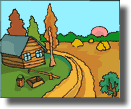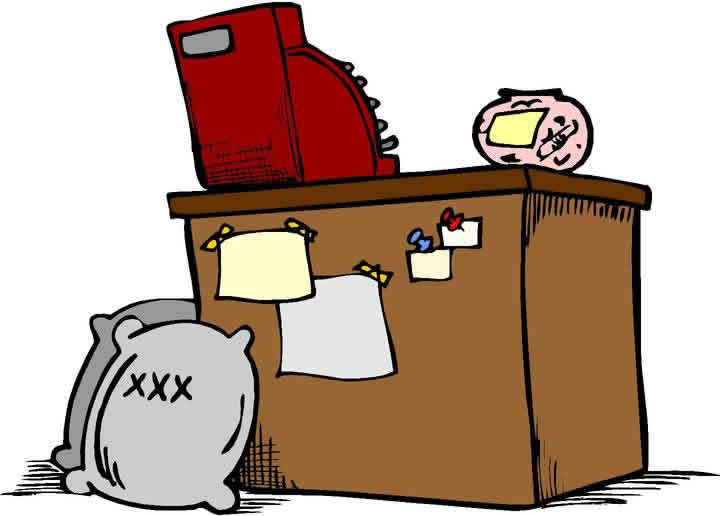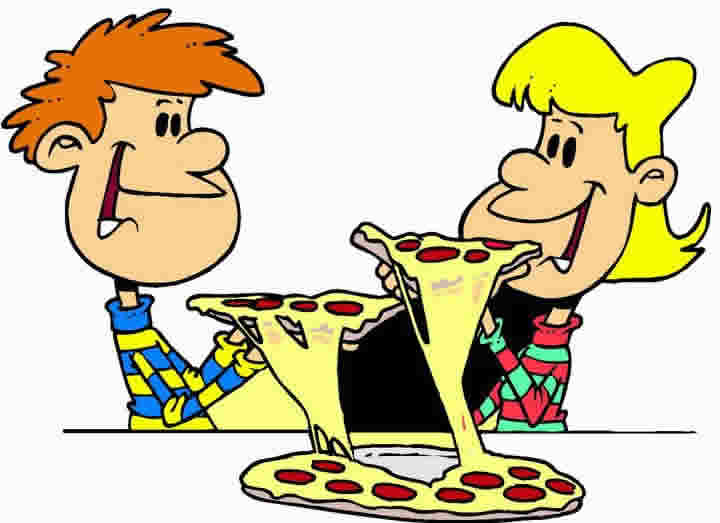Laura Ingalls Wilder’s Frontier Town

Laura Ingalls Wilder made a sketch of De Smet, South Dakota in the 1880’s. This lesson will discuss the markets in De Smet and competition.
Introduction
 Students need to know that markets are anywhere that there are buyers and sellers. This lesson is going to look at De Smet, South Dakota in the 1880s and the students are going to identify the markets. The map presented in this lesson was adapted from the original map that was drawn by Laura Ingalls Wilder. The map will provide students with an idea of what markets existed in De Smet, South Dakota during Laura Ingalls Wilder’s time. The lesson is going to ask students to find evidence of markets in the past and in their own communities.
Students need to know that markets are anywhere that there are buyers and sellers. This lesson is going to look at De Smet, South Dakota in the 1880s and the students are going to identify the markets. The map presented in this lesson was adapted from the original map that was drawn by Laura Ingalls Wilder. The map will provide students with an idea of what markets existed in De Smet, South Dakota during Laura Ingalls Wilder’s time. The lesson is going to ask students to find evidence of markets in the past and in their own communities.
Students will pick a market in their own community.Then they will classify it as a market for fast food, a market for hair cuts, a market for bikes, etc. They will name other businesses that are in competition with each other in the market they chose.
Younger students will do an interactive drag and drop activity in which they identify the consumers. Then they will draw a simple map of a town that has competition in it.
Learning Objectives
- Identify a market.
- Classify a market and identify its competitors in their community.
- Discuss how competition in markets tends to lower prices.
Resource List
-
Street Map: See the street map that is taken from a sketch drawn by Laura Ingalls Wilder's.
hoover.archives.gov/LIW/DeSmet/desmet_map.html
-
Map of Laura Ingalls Wilder House: This is a map of all the places in which Laura Ingalls Wilder lived.
hoover.archives.gov/LIW/pioneering/index.html
-
Consumers and Non-Consumers: An interactive drag and drop activity that will test students understanding of consumers and non-consumers.
Drag and Drop
Process
[NOTE: Keep reminding students that markets are ANY place where buyers and sellers meet to do business. The typical student will think of a supermarket as the only type of business that is a market because it has the word market in its name. Be prepared to present the idea that competition in a market has an impact on that market. Many times competition will reduce the price within that market.]
Your students will have probably heard of Laura Ingalls Wilder. Remind them that she is the author of the Little House books. Her tales of frontier life have been read by children for many years. She lived in several frontier towns including De Smet, South Dakota. Use the following link to show your students a map of all the towns she lived in .
De Smet, South Dakota was a frontier town in the 1880’s. About 80 people lived in De Smet and there were many businesses. You could say there were many markets. Markets are created when buyers and sellers interact. Markets are ANY place there are buyers and sellers. A market doesn’t have to be a particular place or business.
There are buyers and sellers in markets. A buyer is a consumer. You are a consumer if you buy gas, rent a video, or go to a movie. Consumers are people who buy goods and services.
The sellers in the markets are the people who are selling the goods and services. Buyers and sellers are important to a market. Ask your students if they would go to a store if they could not buy anything? Would a store stay open if the store’s owner could not sell anything? No, a store is a market where buyers and sellers meet to buy and sell.
Have your students look at a street map of De Smet, South Dakota. What are the markets in De Smet? [The church, the school, the vacant lot, and the houses would be the only items on the map that are NOT markets.]
Count the grocery stores in De Smet. There is the Barker’s Grocery store, the Harthorn Grocery store, and the Wilmarth Grocery store. How many hotels are there? [Two.]
When there is more than one market that is selling the same good or service, we call that competition. Competition is good for the consumer. If there was only one grocery store in De Smet, what might happen? Sometimes a store that does not have any competition will charge high prices on items that people need.
If there was only one grocery store in De Smet, and it sold flour for a high price, what would people have to do if they needed flour? [They would have to pay the high price.] What would happen if there were two stores in De Smet that sold flour and one store sold it for a higher price? [The people could go to the other store and buy flour for less.]
Ask your students if they have a Pizza Hut in their community? If they have a Pizza Hut, then they might also have a Domino’s, Papa John’s, or  another pizza store. Have them discuss they think would happen if Pizza Hut started selling pizzas for $20 a pizza? [You would probably go to another pizza place.] But what would happen if they really wanted pizza, and they didn’t have time to make it themself, they had $20 for food, and there was only Pizza Hut in their community? Would they buy the pizza? [Probably.]
another pizza store. Have them discuss they think would happen if Pizza Hut started selling pizzas for $20 a pizza? [You would probably go to another pizza place.] But what would happen if they really wanted pizza, and they didn’t have time to make it themself, they had $20 for food, and there was only Pizza Hut in their community? Would they buy the pizza? [Probably.]
This is how we know that competition is good for consumers: competition between sellers helps to keep prices lower. In a town of only 80 people there was enough business to keep three grocery stores going. Ask your students how many stores do they have in their community?
Have your students look at the street map of De Smet, South Dakota again and see how many hardware stores there were in De Smet. [two] Was that a good thing for consumers? [Yes.] Why? [Because it kept prices lower.]
Conclusion
Students will have been introduced to the terms market, consumer, and competition. They should be able to identify a market in their own community and tell whether or not that market has competition.
Assessment
Younger students:
The students will do an interactive drag and drop activity in which they will identify people in the role of consumers. Then they can draw a simple map of a neighborhood where there are stores that have competition.
Older students:
Have your students write a sentence in which they use the name of a market in their town. Don’t list pizza. What kind of good or service is sold there? Is it a market for gasoline, a fast food meal, or a haircut? Next have your students list all the businesses that would be in competition with the market they named.

